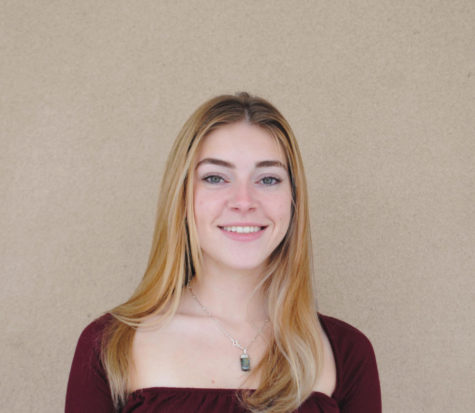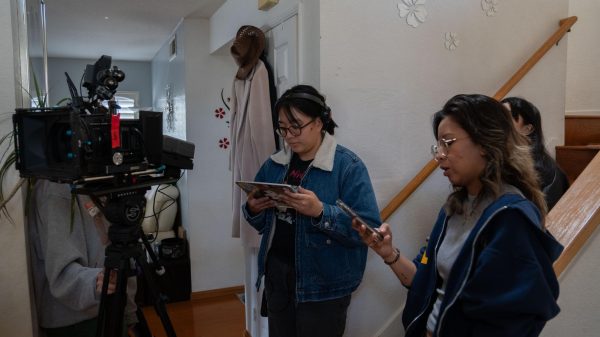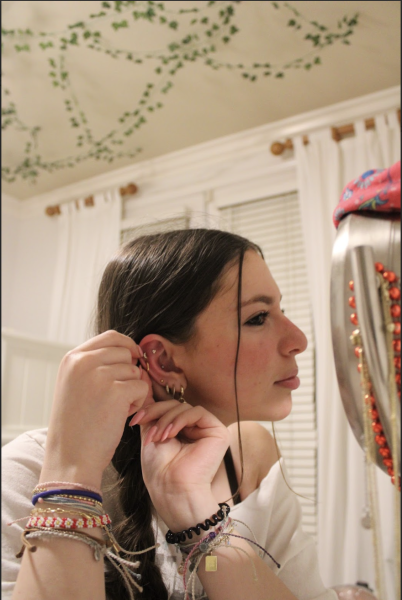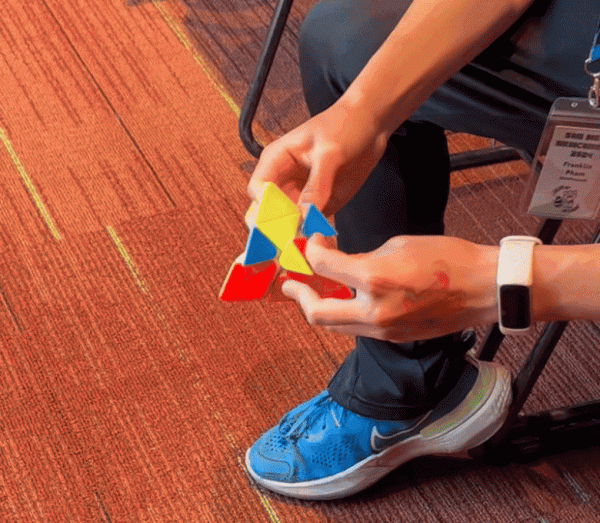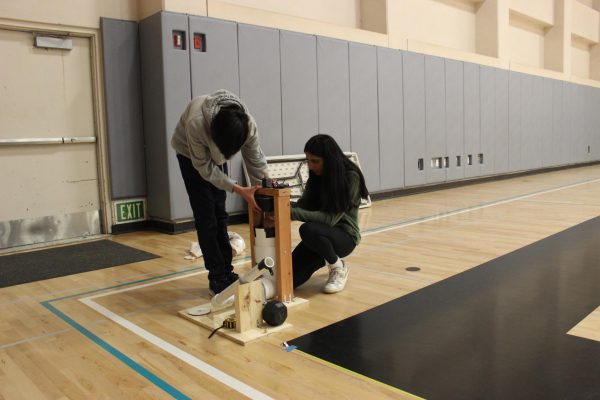Teachers lack paid parental leave, struggle as new parents
June 3, 2022
When teacher Sarah Smith* found out in December of 2020 that she was pregnant with her second child, she wasted no time to explore her options for maternity leave. She started the process of requesting time off early and sought answers concerning the terms of her maternity leave from PUSD’s Human Resources (HR) department. Despite her proactive approach, Smith says the months ahead of her daughter’s birth were riddled with uncertainty.
“When I reached out to see what benefits I was eligible for and what processes I needed to start, the lady pretty much just emailed me back some paperwork and said, ‘read this,’” Smith said. “I just had to interpret it the best I could.”
According to PUSD’s Director of HR Charan Kirpalani, PUSD adheres to both state and federal leave policies. In California, state-mandated maternity leave occurs in two parts: Pregnancy Disability Leave (PDL) and Child Bonding/Parental Leave. PDL can last up to four months, and starts when a medical provider states that the employee can no longer work. After the employee is released to full duty by their medical provider, the employee can then elect to use the 12-week Child-Bonding leave period, but only if they’ve worked in PUSD for 12 months prior to leave.
With a lack of support from the district, Smith said that understanding when she could take advantage of PDL was difficult, especially as someone who was due to give birth during summer when school was not in session.
“When I first read the paperwork that was sent to me, I thought ‘Oh, I get six weeks of disability, maybe those six weeks can start in August and I can get more time off to be with my baby,’” she said. “But turns out, I was wrong. When I had questions, I could email [HR], but I always felt that all of this should have been explained in a one-on-one Zoom or in an in-person meeting to avoid all of this confusion.”
When taking PDL and Child Bonding, teachers are required to exhaust all of their sick days, and only during this time are teachers able to receive their full salaries. Per PUSD’s parental leave policies, once these sick days are used up, the employee will then enter extended illness leave and will receive differential pay—their full salary minus the cost of substitutes.
But because teachers only receive 10 extra sick days per work year, and sub costs in PUSD are so high—averaging $180 a day—many teachers like Smith feel that they are left with no choice but to carry their pregnancies fully or nearly to term while at work.
“Those first months [of pregnancy] were hell,” Smith said. “I was so nauseous and tired during my first trimester, and then during my third I was ginormous and carrying around this giant baby, but I just had to power through. I never felt like I could take a day off for myself because I knew I would need that sick day later to be with my child.”
During her maternity leave, Smith only had enough sick days to cover 3 of the 11 weeks that she took off the following school year after her daughter was born. Because she was only paid a fraction of her salary for the majority of her leave, Smith said that she had to return to work only 5 months after giving birth—much earlier than she would have liked to.
“I ended up only taking off for 11 of the 12 weeks of Child Bonding because that 12th week was the first week of November, and I wanted to get my full pay for that month,” she said. “I decided to cut it short because when I’m gone, my bills don’t just go away. It’s hard to make the dollar stretch past a month, so honestly, what made me come back was the money, because I just couldn’t afford not to.”
Westview math teacher Angela Johansen said she also felt that her hands were tied when deciding how long to take off for maternity leave, fearing that she would not have worked for the required 75% of the school year to receive a raise for her next year’s salary.
“When I had my first [child}, I was trying to calculate how long I would be able to take off so I could still receive my bump in pay for the next school year,” Johansen said. “And when I’m also calculating the numbers knowing how much I’m paying for a sub to be in my room, it’s better for me money wise to actually come back and teach. But obviously for the purpose of bonding with my child, it’s not.”
For many teachers, upon returning to work, they have very few, if not no sick days left. According to Johansen, this can be stressful on days that one of her children wakes up sick, especially because her husband also teaches for PUSD.
“In our minds, our sick days are for our kids, not for us,” Johansen said. “There’s the days that our kid wakes up sick and [my husband and I] look at each other and we’re like ‘who can take the day off today?’ And it’s not as easy for a teacher because we have to provide lesson plans for our subs. So you know, that’s just another stressful thing, especially knowing that we only get 10 [sick days] a school year.”
Despite not having any sick days left upon returning to her job, it was not unusual for Smith to have to take time off from work when her child got sick. Having to do so without pay, Smith said it made the transition back to work difficult.
“When you come back from maternity leave, you also add on daycare costs, so not getting paid for that day when you have to be out makes a huge difference,” Smith said. “On top of that, the last thing you want to worry about when you’re taking care of your sick child is ‘Oh, great, this means I’m gonna be missing a good chunk of money from my paycheck.’”
Not only are finances a source of stress for Smith in her first year back at work, but because her daughter still relies exclusively on breastfeeding, she also has to allocate time to pump during the work day. Very quickly, Smith realized that her only time to do so would be her 30-minute lunch, so she made sure to spend extra on a “fancy” breast pump—one that would allow her to pump hands free so she would still be able to eat her lunch. However, Smith says that despite her investment, she’s always worried that she’s not going to have enough time to finish pumping before the bell rings.
“Breastfeeding and being able to pump was definitely my highest stressor with having to come back so early,” she said. “If I don’t pump at work, it will decrease my milk significantly. And there was a point where I was so worried that I wasn’t going to make enough milk for her that my milk [production] decreased from that stress alone.”
According to English teacher Katie Wu, hearing about the concerns of her colleagues who have children while working for the district—especially from those who also have spouses who work for PUSD—has had an impact on her family planning.
“Having a child is something that although yes, it’s a very joyous occasion, it is something that I’ve had to grapple with and think about ‘how is this going to affect not only me but my household and our future,’” Wu said. “As a woman, it’s unfortunate that in this time and age I have to think about whether I choose to have a family, what is going to be the cost of that?”
Today, the United States is one of the only developed nations in the world that does not mandate paid parental leave, and the K-12 sector is no exception. Only a handful of states offer paid parental leave for teachers, and California is not one of them. However, individual school districts are still able to set their own parental leave policies beyond federal and state standards.
After becoming aware of the lack of paid leave in her districts’s parental leave policy, Oceanside Unified School District (OUSD) teacher and union representative Jill Nelson* brought her concerns to her school board. Now, OUSD offers teachers 12 work weeks of paid parental leave for the birth of a child, the adoption of a child, or after becoming a foster parent.
According to Nelson, she believes it’s crucial that school districts model the same compassion for educators and parents as they do for their students.
“Comparative to every other developed nation across the globe, [the US] has the highest infant mortality rate and the highest postpartum mortality rate,” Nelson said. “Why wouldn’t we want to provide our families with a foundation of wellness during the first few months of life?”
After having children while working for two separate districts, Smith received less than satisfactory terms for her maternity leave. Smith, like Nelson, also says she believes that more school districts—including PUSD—need to be giving teachers support beyond what they are required to by law.
“The rest of the world recognizes how hard teachers work and the importance of having children with their mothers for as long as possible,” Smith said. “But for whatever reason, the United States is just so behind in that aspect. And Poway is with it because they’re only giving us the bare minimum that they’re required to. What we are given is not helpful, it’s stressful. It feels way too short, especially when your body’s still healing from a very traumatic event and you’re still using that body to feed a child daily. It’s hard because we just bear through, because we can’t afford to do anything else.”
*Names changed


